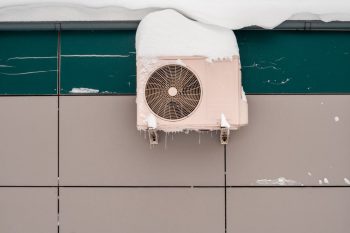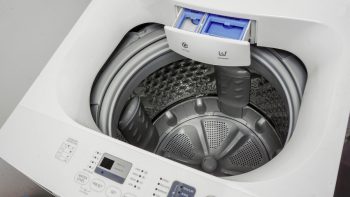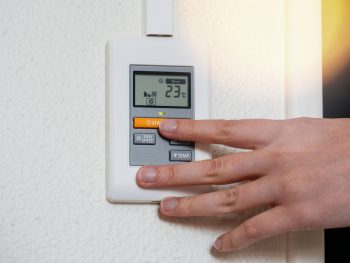
The compressor is the heart of your LG refrigerator, responsible for maintaining a cool temperature by circulating refrigerant. Replacing a faulty compressor can seem like a daunting task, but with the right tools and guidance, you can give your refrigerator a new lease on life. This comprehensive guide will walk you through the steps of replacing an LG refrigerator compressor, from identifying the issue to testing the new compressor.
Replacing an LG refrigerator compressor involves identifying the signs of a faulty compressor, gathering necessary tools, safely disconnecting the refrigerator, accessing the compressor, removing the old compressor, installing a new one, and testing it. Signs of a faulty compressor include inadequate cooling, unusual noises, overheating, and error codes. Tools needed include a vacuum pump, manifold gauge, refrigerant scales, and more. The process involves cutting and reconnecting tubes, handling refrigerants, and electrical testing, which may require professional skills.
Signs Your LG Refrigerator Compressor Needs Replacement
The first step in replacing your LG refrigerator compressor is identifying the problem. Here are the signs that your LG refrigerator compressor might need to be replaced:
- Inadequate Cooling: The refrigerator is not cooling enough or not cooling at all.
- Unusual Noises: Loud humming, buzzing, clicking, or rattling sounds from the compressor.
- Overheating: The compressor is hotter than usual.
- Error Codes: The fridge displays an error code related to the compressor.
If you observe any of these signs, it’s time to consider replacing the compressor. Note that this is a complex task that requires practical technical skills. If you’re not confident about performing this task, consider hiring a professional.
Tools Needed for the Replacement Process
To replace the compressor, you’ll need the following tools:
- Vacuum pump
- Manifold gauge
- Refrigerant scales
- Refrigerant cylinder
- Screwdriver
- Wrench
- Flashlight
- Tubing cutter or a pair of dikes
- Soldering torch
- Multimeter
Please ensure that you’re familiar with these tools and how to use them safely before starting this project.
Disconnecting the Refrigerator Safely
Safety should be your top priority when working with electronic devices. To safely disconnect your LG refrigerator:
- Turn off the refrigerator and unplug it from the wall outlet.
- If possible, switch off the circuit breaker for the refrigerator’s circuit to ensure that no electricity can flow to it.
How to Access the Compressor
The compressor is typically located at the bottom of the refrigerator, at the back. To access it:
- Pull the refrigerator away from the wall.
- Use a screwdriver to remove the screws holding the back panel in place.
- Carefully remove the panel to expose the compressor and other components.
Removing the Old Compressor
To remove the old compressor correctly:
- Attach a perforating valve to the process tube and release the refrigerant into an appropriate container.
- Remove the ground wires and unplug the compressor.
- Use a tubing cutter or a pair of dikes to cut the piping connected to the compressor.
- Loosen the bolts or screws securing the compressor to the fridge chassis and lift it out.
Installing a New Compressor
When purchasing a new compressor, consider factors like compatibility, capacity, refrigerant type, voltage and frequency, warranty, and price. To install the new compressor:
- Place the new compressor in the same spot as the old one.
- Connect the tubes and use a soldering torch to weld them on.
- Inject nitrogen into the system and use a sniffer tool or soapy water to check for leaks.
- Fill the compressor with the correct volume of refrigerant.
Testing the New Compressor
Once the new compressor is installed, it’s important to test it to ensure it’s working correctly:
- Check the wiring connections.
- Measure the voltage and current at the compressor terminals with a multimeter.
- Attach pressure gauges to the suction and discharge lines of the compressor and observe the pressures.
- Measure the temperature of the discharge line.
- Check for any air or refrigerant leaks around the compressor.
- Listen for any unusual noises during operation.
By following these steps, you can ensure your refrigerator is back in top shape. Remember that replacing a compressor is a complex task, and it might be best to hire a professional if you’re not comfortable doing it yourself.
Frequently Asked Questions
What is the function of a refrigerator compressor?
The compressor in a refrigerator is responsible for circulating refrigerant, which helps maintain a cool temperature inside the refrigerator. It compresses the refrigerant, raising its pressure and temperature, and pushes it into the condenser where it is cooled and transformed from a gas to a liquid.
How long does a refrigerator compressor usually last?
A refrigerator compressor typically lasts between 10 to 20 years, depending on the model and how well it’s maintained. However, if your refrigerator is not cooling properly and it’s not due to other common issues (like thermostat problems, dirty coils, or a blocked vent), the compressor might be at fault.
Do I need to hire a professional to replace the compressor?
Replacing a refrigerator compressor is a complex task that requires practical technical skills and familiarity with electrical systems. It’s also important to handle refrigerants safely and legally. If you’re not comfortable doing this yourself, it’s recommended to hire a professional.
How much does it cost to replace a refrigerator compressor?
The cost to replace a refrigerator compressor can vary greatly depending on the model and the area you live in. On average, you can expect to pay between $200 and $400 for the compressor itself, and between $200 and $300 for professional installation. So, the total cost can range from $400 to $700.
What could happen if I install the compressor incorrectly?
Incorrect installation of a refrigerator compressor could lead to several issues, such as poor cooling performance, overheating, or even a complete breakdown of the refrigerator. It could also potentially lead to electrical faults, which can be dangerous. That’s why it’s crucial to either be fully confident in your ability to perform the replacement or hire a professional.












